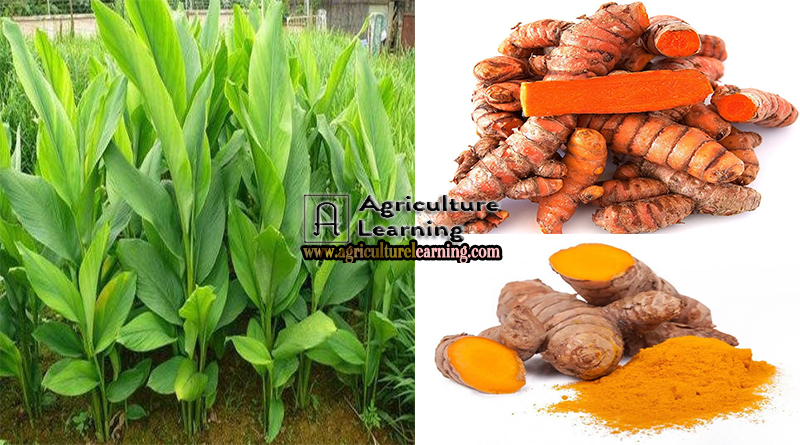Turmeric cultivation process and its health benefits
Turmeric is a rhizomatous herbaceous perennial plant which is called as “Curcuma longa” scientifically. It is belonging to the ginger Family, Zingiberaceae. Turmeric is native to southern Asia and is being used as condiment, dye, drug and cosmetic in addition to its use in religious ceremonies. It is one of key and major ingredients of Asian dishes. People often use the turmeric powder in marinating of meats apart from the regular culinary use. It can be used as natural home remedies for many common health problems since it has excellent medical value. India is the top producer of turmeric in the world. Root and rhizome are the parts used in turmeric cultivation. Turmeric has been used in Asia for thousands of years and is a major parts of siddha medicine. It can be grown in a port or containers. Some people grow turmeric indoors as well.
Bangladesh is a significant producer country of quality turmeric; especially Chittagong hill tract grows huge quantity of organic base high quality turmeric which has big demand in home and abroad. We are in a position to supply processed and dried turmeric in whole and powder form round the year with best competitive price.
Turmeric Common Names: – Turmeric, Curcuma, Ukon, Goeratji, Kakoenji, Oendre, Rame, Renet, Temu kuning, Haridra, Haldi, Indian Saffron, Kondin, Kunir, Kuntit and Tius.
Top 10 Production Countries of Turmeric:
- India
- Bangladesh
- Pakistan
- Sri Lanka
- Taiwan
- China
- Myanmar
- Indonesia
- Mozambique
- Jamaica
Health Benefits and uses of Turmeric:
- Turmeric has natural antiseptic and antibacterial properties, hence used for wound/cut/burn healing.
- Turmeric protects against liver diseases.
- Turmeric helps boost the immune system.
- Turmeric has anti-inflammatory and anti-oxidant properties.
- Turmeric is good for skin health.
- Turmeric is good for hair health.
- Turmeric helps promote weight loss.
- Turmeric helps in relieving common cold, cough and fever.
- Turmeric controls type-2 diabetes.
- Turmeric treats sprains and swellings.
- Turmeric improves rheumatoid arthritis.
- Turmeric can be used as a home remedy for a chronic cough.
- Turmeric may prevent and help in treating Alzheimer’s disease.
- Apart from the above benefits, it is heavily used in herbal (Ayurveda) medicines and cosmetic industry.
Varieties of turmeric: There are many varieties of turmeric in Bangladesh. Bangladesh Agriculture Research Institute have invented five varieties of turmeric like BARI Turmeric-1 (Dimla), BARI Turmeric-2 (Sundori), BARI Turmeric-3, BARI Turmeric-4, BARI Turmeric-5.
There are many varieties of turmeric such as Swarna, Sudarshana, Rajendra, Sonia, BSR 1, Roma, Krishna, Suroma, Suguna, BSR 2, Ranga, Rashmi, Salem, IISR prabha and IISR kedaram found in India.
Climate Requirement for turmeric:
Turmeric is a warm season crop and thrives best in humid climatic conditions. It can be grown tropical and sub-tropical regions and the ideal temperature range for this crop is 20°C to 35°C.
Temperatures less than 20°C will result in reduced yield. Turmeric crops require an annual rainfall of 80-250 cm. Turmeric crop can be grown under both irrigated and rain fed conditions.
Soil Requirement for Turmeric:
Turmeric crop can be grown on a wide variety of soils. However, it thrives best in well-drained sandy or clay loam soils rich in organic matter and uniform in texture. The ideal soil pH range for this crop is 4.5 -7.5. if you are planning for growing commercially, it is recommended going for a soil test to find out the fertility and suitability of the soil.
How to select planting material of Turmeric:
Seed selection is one of the key tasks for best turmeric growth and yield. As we know, the seed of turmeric consists of rhizomes and care should be taken in the selection process. Both mother and finger rhizomes can be used for propagation of the crop. The fingers should be cut into pieces of 4-5 cm long with 1-2 buds. Mother rhizomes should be planted as such or split into 2, each having one sound bud.
Mother rhizomes should be preferred as they result in 40-50% more yield along with good growth when compared to finger rhizome. Make sure to select large sized, Plumy and healthy mother rhizomes at least 100 grams in weight should be selected as planting material.
Propagation:
Turmeric is propagated by whole or split mother and finger rhizomes. You must select well-developed healthy and disease-free rhizomes as planting material. After the selection of quality seed rhizomes, they should be treated with mancozeb 0.3% (3 grams/liter of water) for 25-30. These treated rhizomes should be dried under shade for 4 hours before planting in the field. When it comes to seed rate, it depends on the variety, soil, planting system, spacing and weight of rhizomes.
Irrigation: Frequency of irrigation depends on the soil type (moisture holding capacity) and climatic conditions. However, in Turmeric cultivation, first irrigation should be given before planting the seed material and the next one should be given just after planting in the field. Subsequent irrigations should be carried out at 7 to 10 days interval. A total of 25-30 irrigations are required during the entire crop period.
Pests and diseases of turmeric:
- Insect pests: Thrips, Rhizome scale, Nematode pests, and shoot borer are common pests found in turmeric cultivation.
- Diseases: Leaf blotch, leaf spot, leaf blight, Rhizome rot are common diseases found in turmeric cultivation.
Harvesting:
The turmeric crop should be ready for harvest in 8-9 months depending on variety and time of sowing. Usually, the turmeric leaves turn dry and yellowish color on maturity. Manual and machine harvesting can be done in the crop.
Yield:
Yield of any crop depends on many factors such as variety, soil type, climate, irrigation conditions and other agriculture crop management practices.





You have noted very interesting details! ps nice
web site.Money from blog
Wow, this post is fastidious, my younger sister iis analyzing these kinds of things, thus I am goihg to convey her. https://bandur-ART.Blogspot.com/2024/08/the-ultimate-guide-to-no-mans-sky-mods.html
Wow, this post is fastidious, my younger sister is
analyzing thyese kinds of things, thus I am going to convey her. https://bandur-ART.Blogspot.com/2024/08/the-ultimate-guide-to-no-mans-sky-mods.html